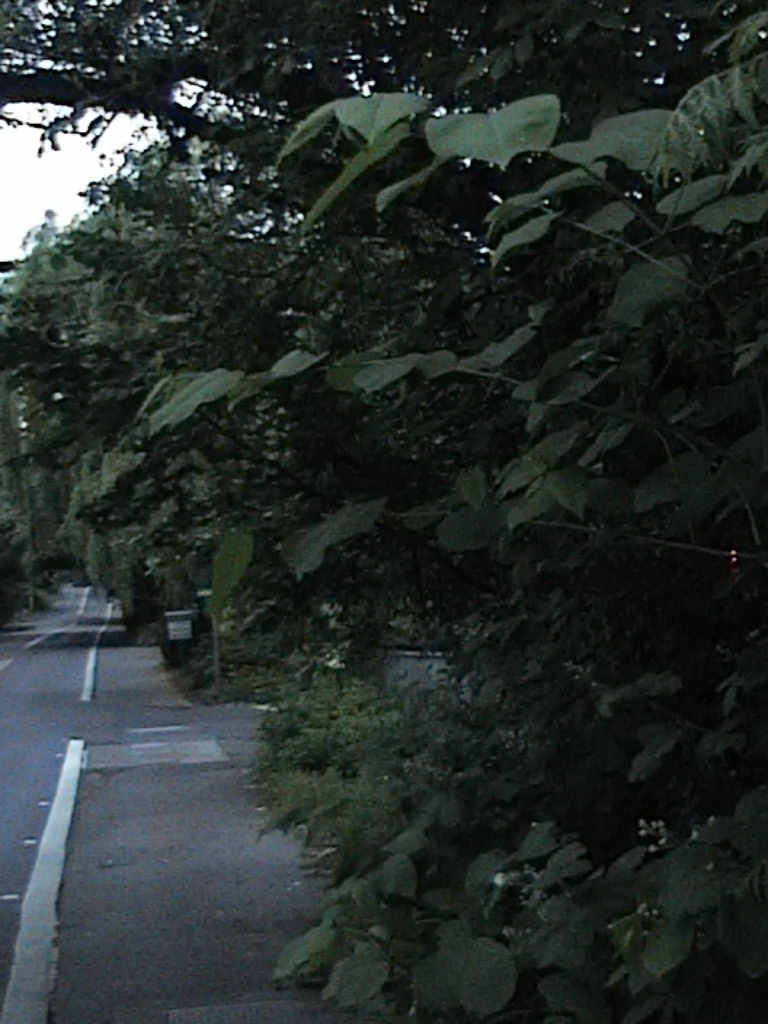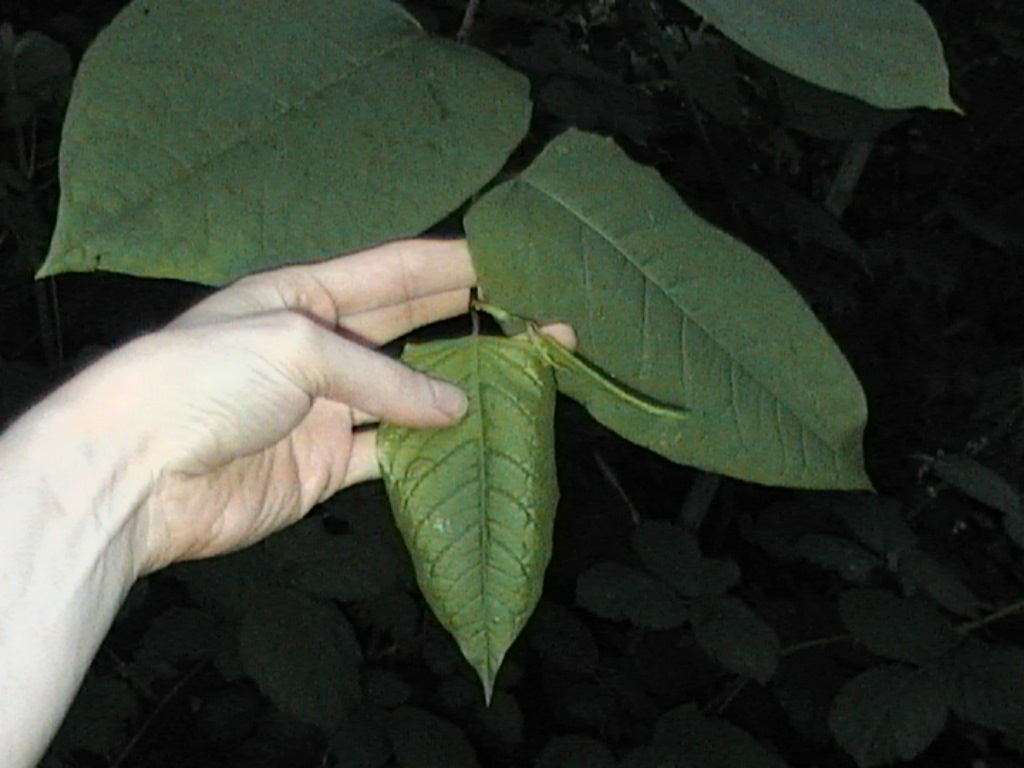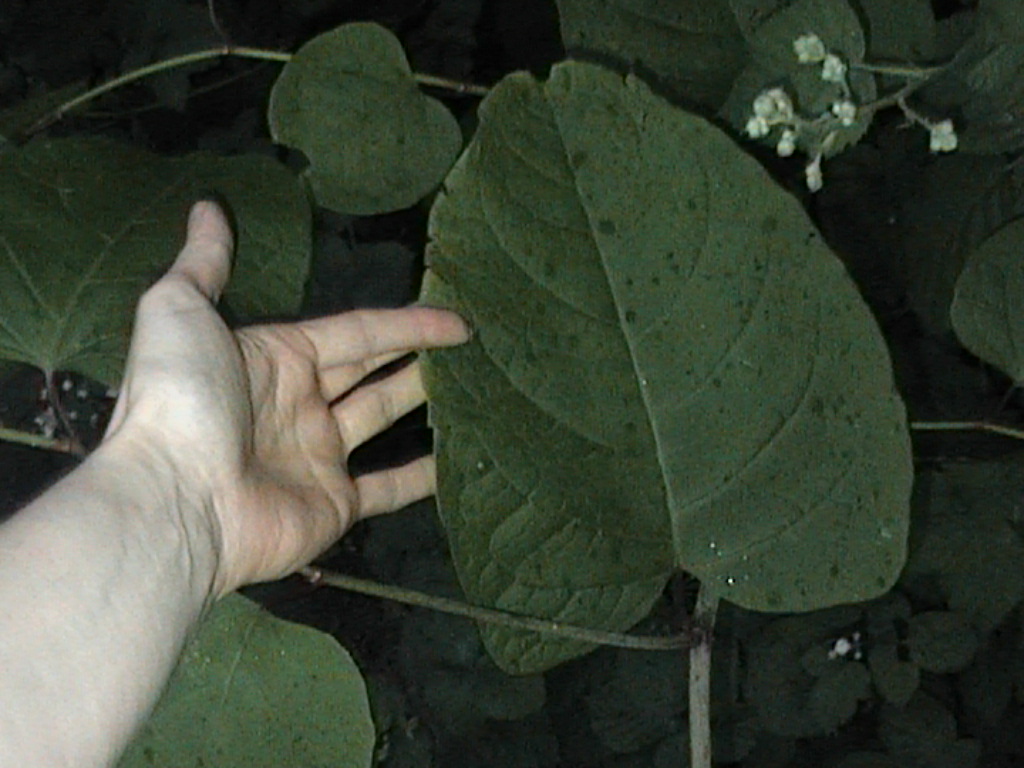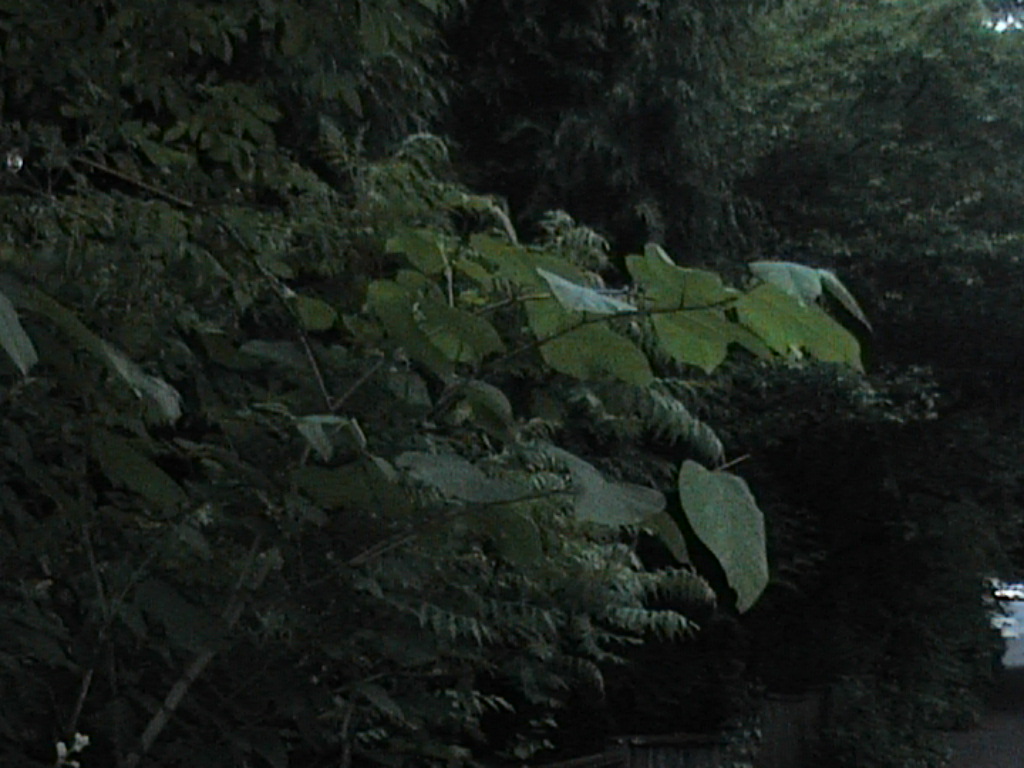Japanese Knotweed (Fallopia japonica) on Jun 6, 2008
Submitter has sample
Description of specimen
The plant is mixed in with other shrubs, but is easily 8' tall. Main stems are substantial -- easily a full inch in diameter -- low on the plant, tapering to 1/8" at the growing ends. The stems are a relatively bright green with small, deep reddish flecks. Attractive, bright green, spade-shaped leaves with noticeable veins are approximately 9" long and 6"-7" wide, and emerge from "joints" along the main stem every 6" or 7". I saw some leaves that were larger but with more of a heart shape to them. The leaf stems are mostly the deep reddish color.






Thanks for reporting knotweed and submitting such excellent photos and exellent descripion. Yes, knotweed is a severe problem. This aggressive plant is taking over stream banks and degrading important riparian habitat. We definitely need to prevent its further spread!
Unfortunately, it is already widespread in your area, so not all populations are targeted for control. There are just not enough resources to control it all. Land managers are taking a strategic approach and controlling knotweed where it is clearing threatening an important resource – like a natural area or infrastructure. The Oregon Department of Agriculture and your local Cooperative Weed Management Area will be notified of your report so they can evaluate the urgency.
Private land owners are responsible for controlling weeds on their property, but sometimes people don’t do anything because the task seems too daunting or they are unaware of the problem. The silver lining to this gloomy picture is citizen stewardship. There are many dedicated volunteers who join forces to uncover and protect their favorite areas from knotweed and other aggressive invaders. In some cases, the local Soil and Water Conservation District can help coordinate the effort and provide resources. If you are interested in joining a local volunteer effort to combat invasive species, or starting your own, there are some excellent websites listed above.
We hope you will keep on reporting! By looking for and reporting some of the less abundant, but equally as aggressive, invasive species, we can control them before they become tomorrow’s Scotch broom, English Ivy, or even knotweed. Check out this website for a list of plants and animals that are priority for early detection and control in Western Oregon: http://www.westerninvasivesnetwork.org/pages/plants.php
Thanks!
Tania Siemens
OSU Sea Grant/The Nature Conservancy
tania.siemens@oregonstate.edu
Tania Siemens
June 7, 2008, 12:39 a.m.